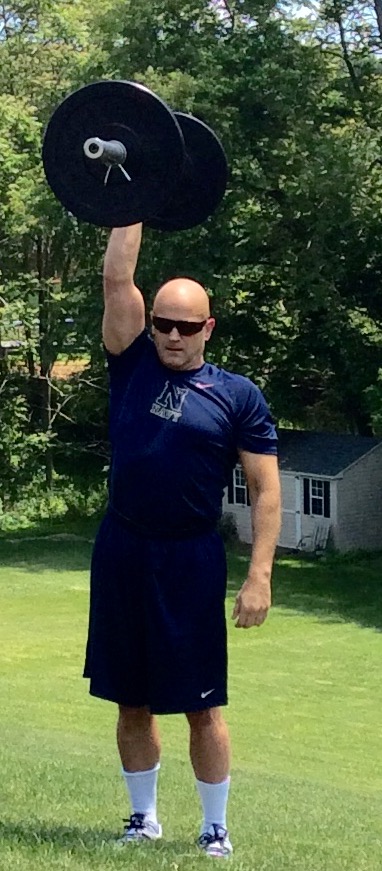Functional Symmetry through Asymmetrical Training Most chiropractors strive for symmetry. Whether looking at radiographs, performing range of motion analysis, postural analysis, strength training, or EMG analysis, we like symmetry. Ironically most activities of life, sport, work, and survival are asymmetrical. Consider these asymmetrical activities of life: carrying groceries or a tool box, swinging a hammer, shoveling, sweeping, eating, using the mouse for your computer, carrying a small child, or gardening. These activities are performed with a dominant side performing most of the work. Functional asymmetry abounds. Asymmetry is even more obvious in athletics: tennis and all racquet sports, golf, baseball, boxing, martial arts, basketball, football, and lacrosse. These activities require propulsion, primarily from one lower extremity, with the core stabilizing to transmit power. Think of a football lineman driving forward. One leg drives him forward, then the other. Meanwhile his core and upper extremities rapidly shift to adapt to the various resistances and obstacles he encounters. |
|
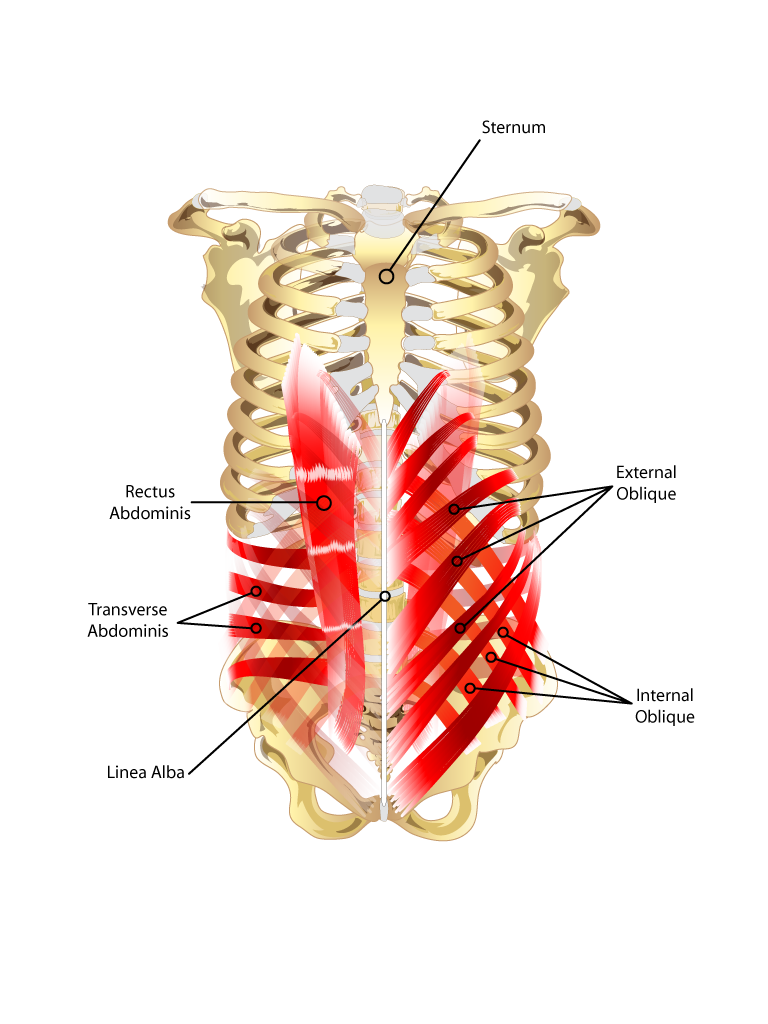 Core muscles transverse abdominis, multifidus
Core muscles transverse abdominis, multifidus
Image 1: The muscles of the core are interconnected and designed to work together in reaction to asymmetrical loads and challenges. They should not be trained in isolation, but with functional exercise programs.
Even seemingly symmetrical activities like swimming, bicycling, walking, and running are a synchronized, coordinated concert of alternating one-sided exertions. These activities require an alternating one-sided contraction of the muscles of stabilization and the muscles of propulsion.
We function in asymmetry. So why to do we train almost exclusively in symmetrical workouts? Most gyms and rehabilitation facilities still utilize balanced, symmetrical resistance loading. Think of the exercises which are most often utilized at gyms: bench press, squatting, barbell curls, pulls downs, leg presses, leg curls, and certainly most weight lifting machines. These symmetrical exercises train our muscles in a way they are not utilized in daily function. To maximize function and performance, we should train and rehabilitate our patients with asymmetrical loads and balance.
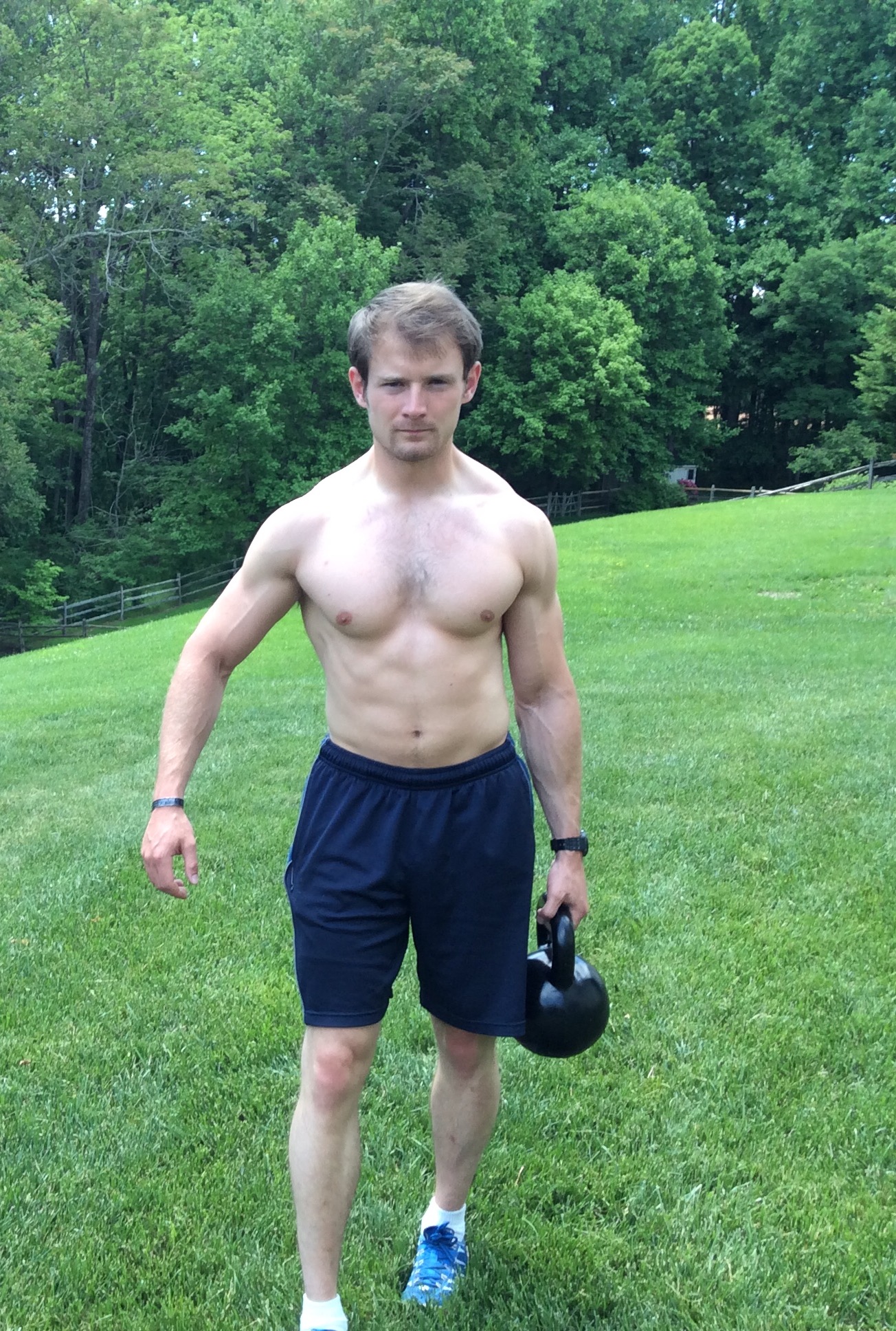 Lunge walking
Lunge walking
Image 2: Farmer walk with an asymmetric load.
Most people separate their physical training routines into strength training, core training, aerobic exercise, and flexibility as if each of these categories is mutually exclusive. Consider an exercise like the lunge walk with overhead weight (image 3). It enhances hip motion, works global body strength and the core, and if done correctly, will certainly work the cardiovascular system. This type of training has benefits that transfer into normal activities and sports much better than symmetrical exercises and the use of weight lifting machines.
The spine is a flexible column, not a hinge joint; so we should not train the muscles supporting the spine like we would a hinge joint. We should not perform sit-ups, crunches, or other truncal flexion exercises. We should train the core muscles to work in harmony with the extremities. The core is designed to inhibit spinal motion and transfer power. So training it by placing it under an asymmetrical load will train the core as it was designed. Symmetry of strength, flexibility, and stamina is achieved through training each side with the same exercise and weight.
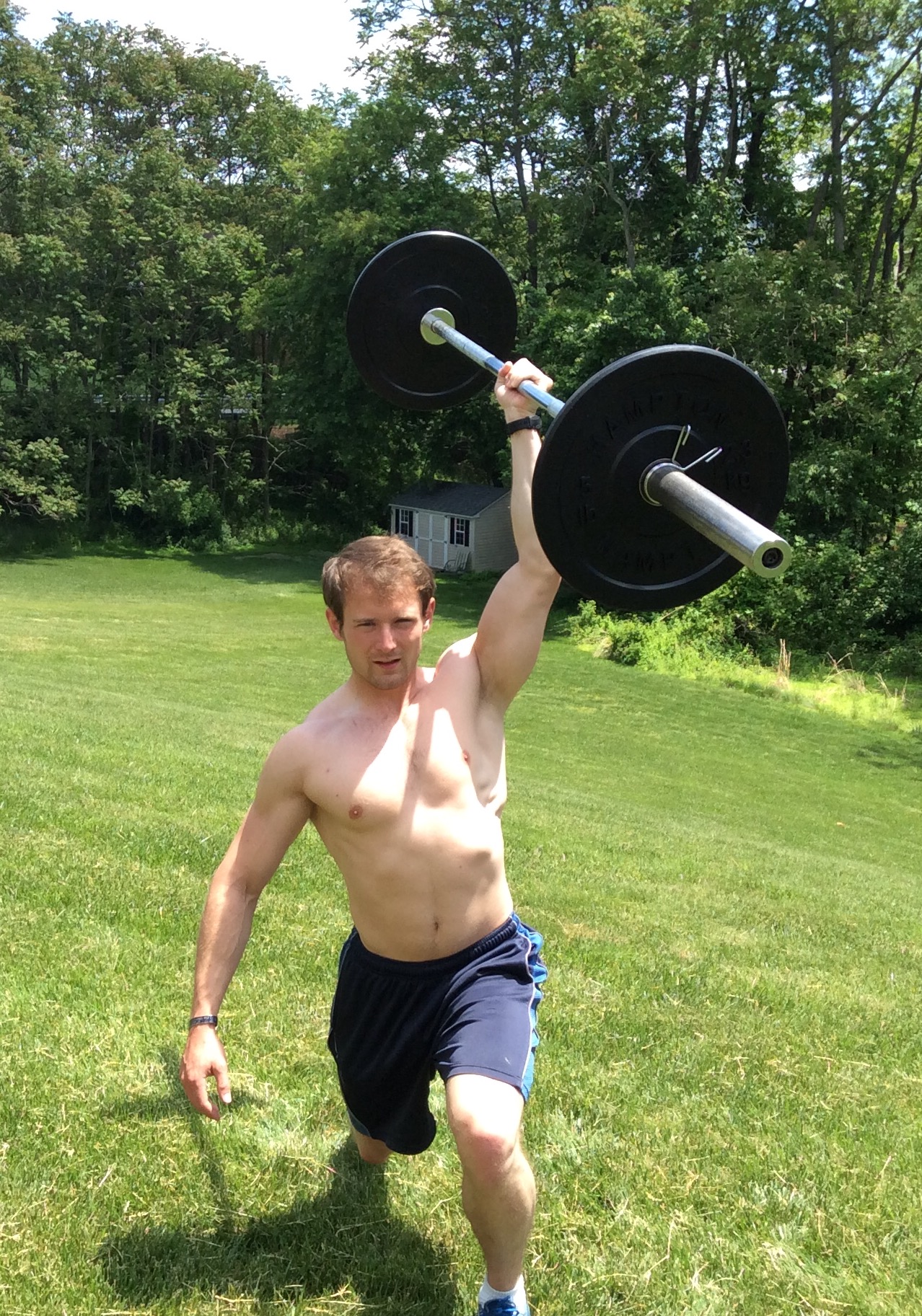 Lunge walking with over head weight
Lunge walking with over head weight
Image 3: Lunge walking with an overhead barbell. While not appropriate for everyone, this exercise combines flexibility, balance, and engagement of most of the muscles of the body.
There are many exercises which can be incorporated into an asymmetrical exercise or rehab program. Some of these exercises are too advanced for patients with high levels of dysfunction. These may be more appropriate for enhancing sports performance and injury prevention than for patients in the early stages of healing. The use of dumbbells, kettle bells, sand bags, pulleys, ropes, sleds, elastic bands, medicine balls, and sand balls are great tools for asymmetrical functional training. Here is a sampling of exercises which challenge the core with asymmetrical stresses.
- Single leg, single arm deadlifting
- Lunge walking
- Lunge walking with a weight (barbell, kettle bell, or dumbbell) in one hand or overhead in one hand.
- Standing one arm pulley exercises
- Farmer walking (image 2)
- One arm overhead presses
- Turkish get up
- Sled pushing
- One-armed clean and presses
- Squatting with a weight in one hand
Training to enhance performance and to rehabilitate patients following injury should emphasize functional motion patterns that provide a benefit which transfers to real life activities. Certainly not every patient should be put on an advanced program of asymmetrical loading. But if you are not training for function, you are training for dysfunction.
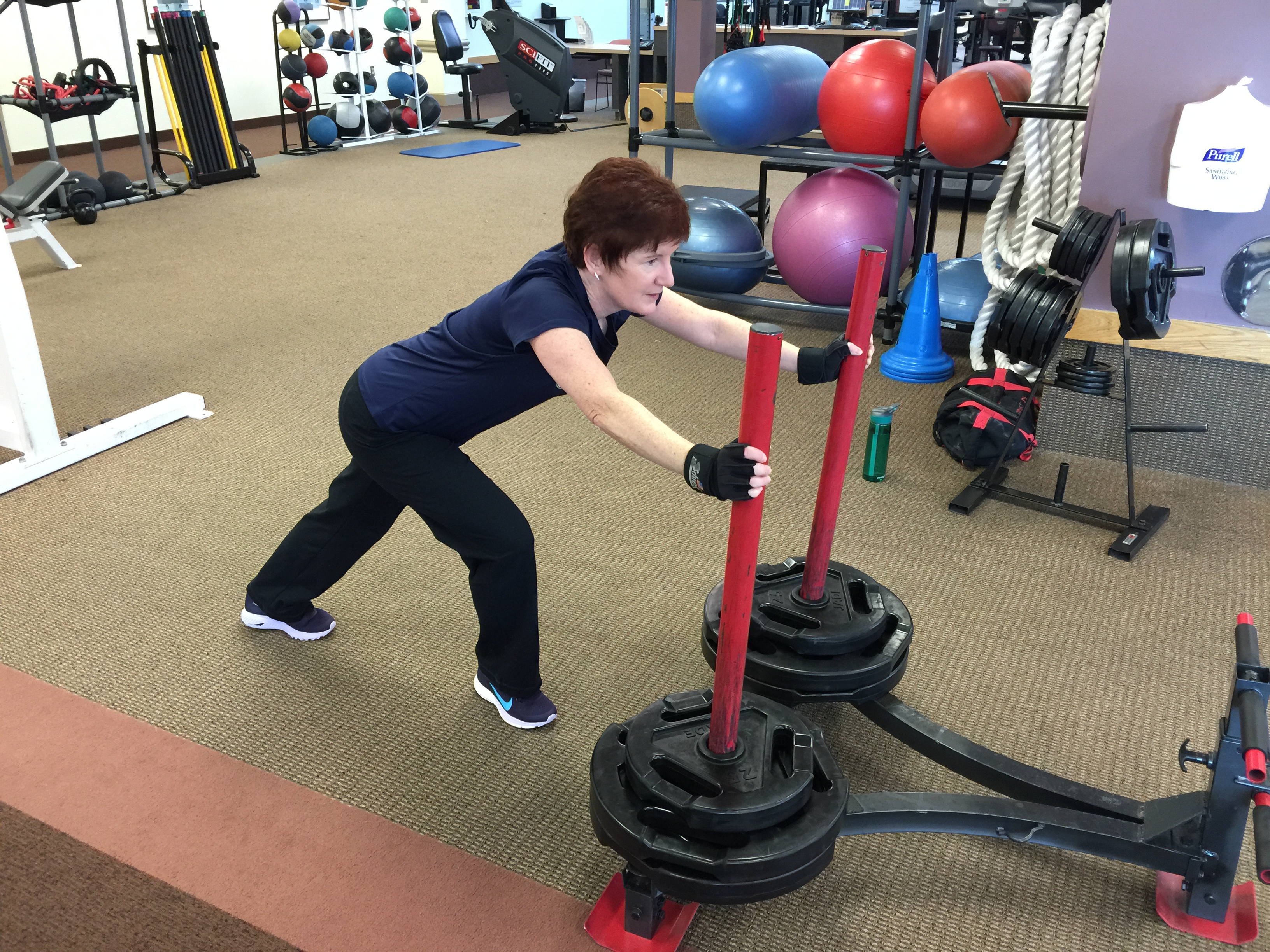
Image 4: Weighted sled pushing.
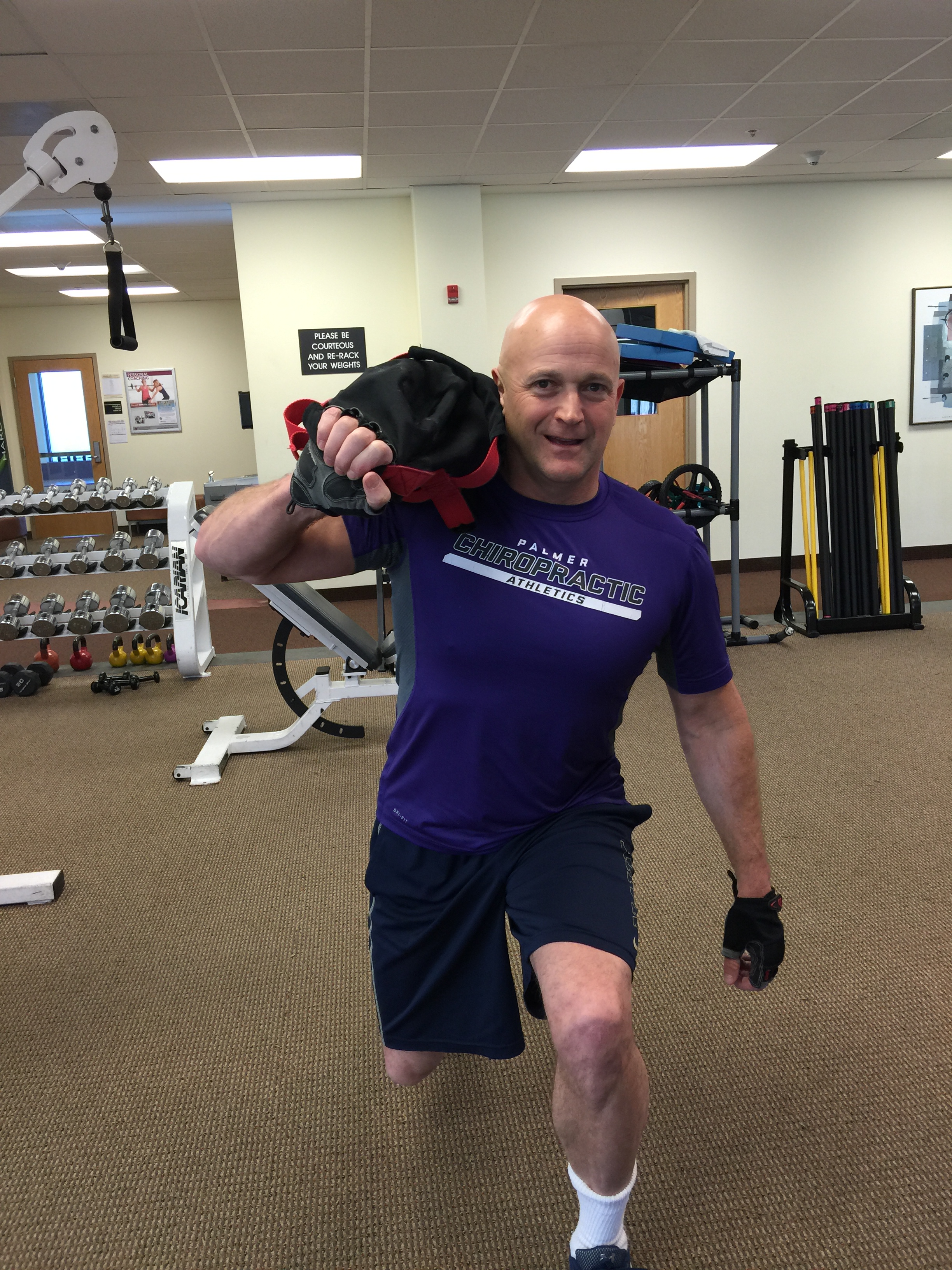
Image 5: Sandbag lunge walking.
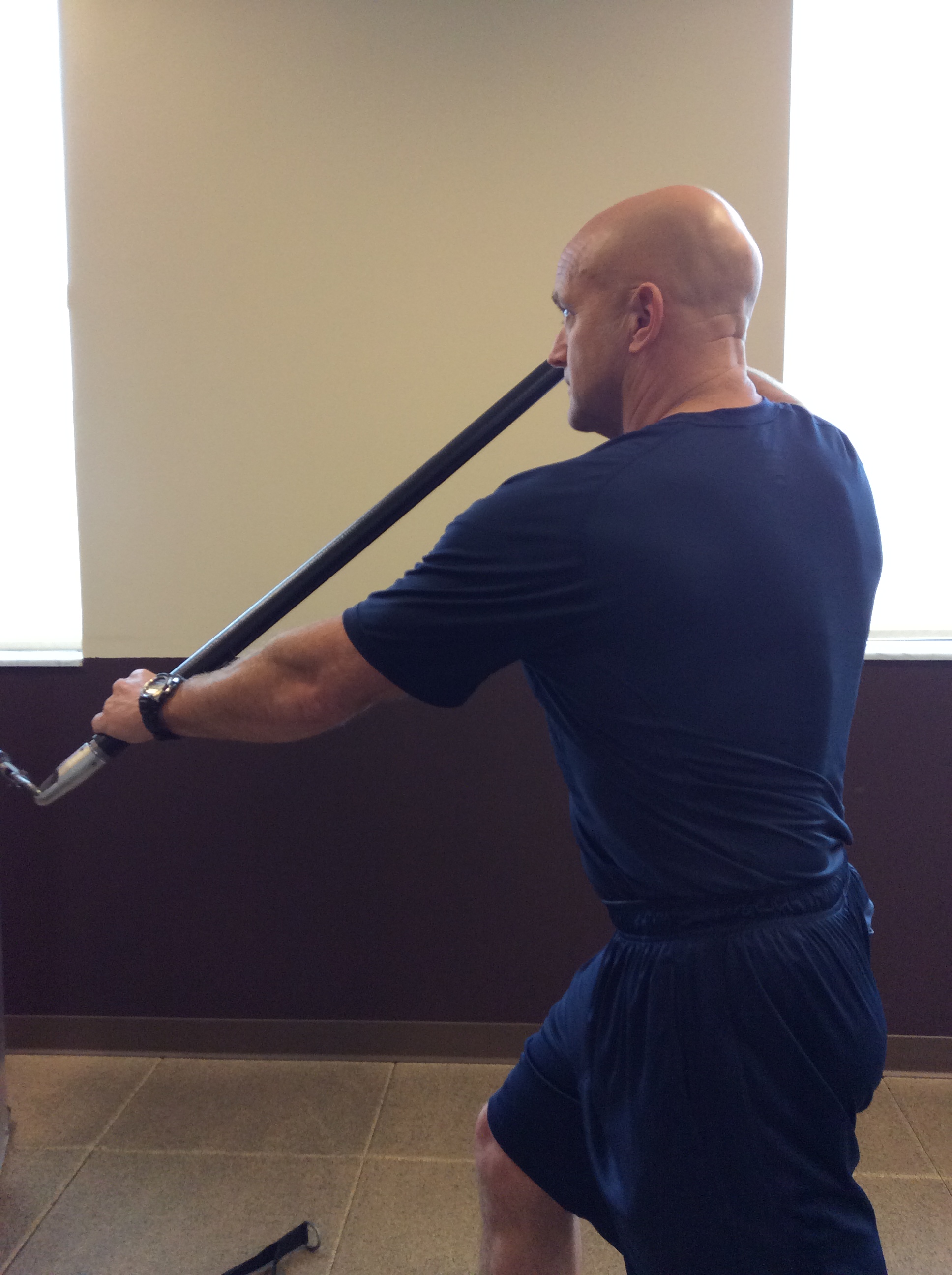
Image 6: Pulleys and elastic tubing can be used to create asymmetrical loads while exercising.

